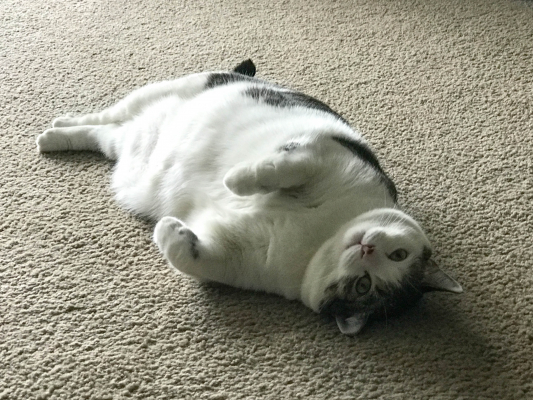5 Ways to Make a Cat Exercise
Cat obesity is a serious health problem. Besides a well-balanced diet, exercise is a great way to fight it. However, making a cat do that might not be as easy as it is with a dog.
The European Shorthair looks like a common cat and its nature is not as stable as other breeds’. That’s why it’s not extremely famous in the world except for Scandinavia, where it’s still quite popular.


This breed looks a lot like common domestic cats you can see in the streets. The allowed fur colours are only the so-called “natural”, i.e. black, red, tortoiseshell blue, blue and cream. Combinations with white spots, white patterns or pure white are also possible.
Thanks to its common look, colour and its resemblance to the British Shorthair and American Shorthair, these cats are not as popular as some more exotic breeds. Basically, they are only popular in Scandinavia where they are kept very often.
They are medium-sized to large cats with the sturdy and well-muscled body. Practically, they only differ from common cats because of their stable breed characteristics and better hair. The hair is short, springy and glossy. Taking care of it takes only minimum amount of time (with the exception of moulting periods).
The nature of the European Shorthair is not as definite as it is in other breeds. It is caused by the fact that this breed emerged from common domestic cats which are very different in nature. Therefore, some are cuddly couch potatoes and others are solitary hunters.
However, their character is inherited to a certain level, so the nature of the kittens can be predicted based on the nature of their parents. Most European Shorthairs are friendly. They get on well with other cats as well as dogs. They are intelligent and playful. That is something they all have in common which also applies to the fact they are healthy and strong cats. Almost every cat of this breed is capable of keeping your household mouse-free.
Even though this is practically a common domestic cat which doesn’t stand out with its appearance nor its characteristic features, the pure blood still has its benefits. You can be sure that it doesn’t have any hereditary disease or character fault such as shyness or aggression.


Cat obesity is a serious health problem. Besides a well-balanced diet, exercise is a great way to fight it. However, making a cat do that might not be as easy as it is with a dog.
Wolves are very different from dogs in many aspects. Apart from their more or less different appearance, they did not experience long domestication and breeding. Jiří, a longtime breeder and owner of wolves, will answer our questions about how he...


The tick season is here and if you haven’t done so far, it’s about the time to start protecting your pet. What options do we have, what are the differences between the individual possibilities and what do I see as their advantages and disadvantages?


Mondioring, even though it can seem easy for those who don’t know it, is undoubtedly one of the most difficult cynological sports. A dog has to be able to work focused for up to 45 minutes, be perfectly controllable and and handle everything in an...


These majestic dogs with a long history seem intimidating at first glance. However, with proper socialization and upbringing, they are pleasant and loyal companions. They are very intelligent and independent. Breeders Antonín Kadlec and Lenka...
An electronic collar can be very helpful for training and keeping your dog safe. However, we need to know how to set it up and use it correctly. Thanks to that, no shocks might be even needed. I asked Petr Zoubek, a hunting dog trainer, about the...


This time of the year is connected, besides enjoying sun and awakening nature, with annoying allergic reactions for many. However, has it ever occurred to you that your dog companion could be allergic to pollen as well? How can you recognize it and...


Have you been thinking about starting with agility and you have nothing but questions in your mind and can’t make the final decision? Is this sport for my doggie? And is it even for me? How and when should we start? I asked Juraj Ruža, an agility...


Cats of this breed are very intelligent, communicative and mainly sociable. They create a really strong bond with people. Besides their nice nature, they are also attractive thanks to their exotic and noble appearance.


During this time, we pay attention to stricter sanitary measures. As we come home, we took off our clothes and shoes and wash our hands. If a dog comes with us, we shouldn’t forget about it as well. It may happen the dog brings the virus to our home....


Spring is here and kittens are born. It might be something new for many of us. Let’s have a look at this topic with a Siberian cat breeder, Helena Rückerová. We will learn what kittens need in their first moments after they are born and how we can...


It’s clear that Easter this year won’t be the same as we are used to and we have to give up on some traditions. We will be at home with our loved ones, so why not to engage our cat companions?